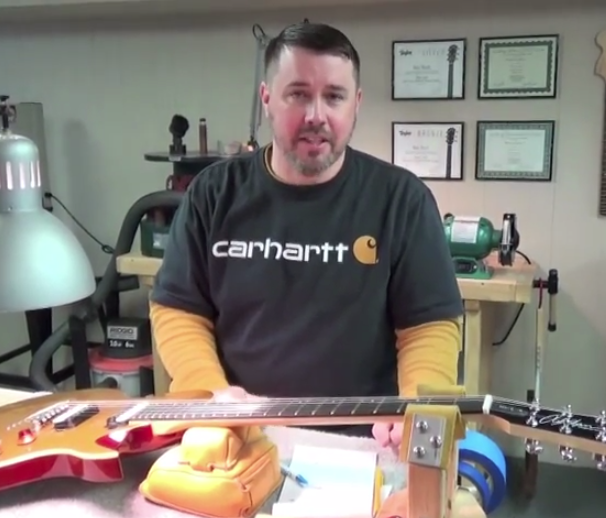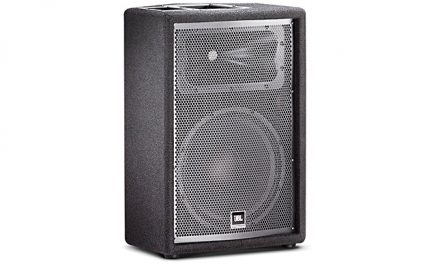Here in Florida, we have a lot of tourists. And so we have a lot of opportunities for musicians to perform in places, but the budgets are not huge. As a result, there are tons of solo performers. They mostly fall into two categories: a singer who plays an instrument, and a singer who plays an instrument and uses backing tracks. Backing tracks can be consist of just drums, or just drums and bass, or a full track minus the main instrument the performer is playing (usually guitar.)
Musicians tend to look down their nose at backing tracks. Non-musicians, who constitute the majority of the audience, tend not to care. Backing tracks are not new – famous singers have used them going back to the 50’s. Much like the idea of performing someone else’s music, the audience doesn’t care about whether the snob guitarist standing in the back with his arms crossed thinks that using backing tracks is “selling out” or whatever. In fact, some venue owners REQUIRE solo performers to use backing tracks. Why? Because most people don’t want to dance to an acoustic guitar and voice.
Live Sound for Acoustic Guitar and Voice
If you are not using backing tracks, your live sound options are many. But I’d recommend the Tommy Emmanuel approach, which is to eq the guitar to fill the frequency spectrum. This means you need to add enough low end to sound full without being boomy, and enough high end to sparkle without being harsh. But you might want to dip the midrange where your voice needs to fit. For those reasons, I would not recommend something too small to have a decent low end. So something like a Bose system with a sub and a stick (containing high end/midrange drivers) can work well, as can a good two way speaker with at least a 10 inch woofer. Personally I prefer a 12 inch woofer.
A good dynamic mic is important, with the industry standard being the Shure SM58, but really any decent mic will do the job. I have an EV dynamic that is similar to the Shure Beta 58, which is a step up in quality, but your speaker and amp are more important to your sound.
Speaking of speaker/amp – these days, powered cabinets dominate the market. It’s easy to understand why – it’s less expensive than buying the components separately, sometimes they even contain separate amps for the woofer and tweeter/horn, and it’s easy to lug one piece of gear than two. The downside is that if your amp dies, the speaker is useless, and same with the speaker. Yes, you can take the thing apart, but probably not at a gig. That said, this can also work to your advantage – if you have two powered speakers and one dies, the other one still works. So a pair of powered speakers is a great idea. In terms of brand, the general rule of thumb is that more $$ = better speaker. And it’s a good rule – all of the brands you’ll find at Guitar Center are decent to great. Buying used can save you a lot of money, as usual, but don’t buy anything new or used unless you’ve heard it and like the sound.
So you have a powered speaker (or two) and a good microphone. What about a mixer? Most singers like a little bit of reverb, and most of the cheapest little mixers have reverb. But the thing that can really make you sound great live is actually compression. I’m surprised more low end mixers don’t include compression. Every vocal you hear on every album is compressed, and when you see any big name artist, you’re going to hear compression. Compression evens things out and gives you a more “pro” sound. The Yamaha MG10 has ten channels and the first two have one knob compression, which works pretty well. That mixer is currently around $150 – might be a good one to look for used, if you want to save $$. There might be other inexpensive mixers with compression – if so, they’re worth a look. Or, if you don’t mind carting a ton of gear, you can buy a used rack mount compressor for $39 – $99. That’ll sound better than the one knob compressor in the Yamaha, but what a pain in the butt. Regardless, if you want your vocals (and guitar) to sound best, you need to compress. Very few live solo performers do it, but more should.
Live Sound for Guitar/Voice and Backing Tracks
Part of the reason that some musicians look down their nose at backing tracks is that almost no one does them well. They put a speaker (or two) on a pole and plug in their iPhone and hit “play,” and it sounds like they’re playing along with a CD. Because they ARE, basically. What you should try to do is sound like a live band, not like someone’s home stereo. And the best way to do that is low end. A good live band has a good low end. You need to feel that kick drum. And there’s no way to do that with speakers on sticks. You either need to put one speaker on the floor, or you need a sub woofer. Get the kick drum sounding big and you’re halfway there. This is part of the reason the Bose system has been so popular – it has a sub on the floor. But you don’t need to drop one to two grand to get that result. Actually, if you have two powered speakers and put one on the floor, you can get some pretty good low end happening. Or you can go with a dedicated sub. I’m surprised there aren’t more powered small subs out there.
With a sub and two powered speakers, you can replicate the sound of a band, especially with compression on your voice and guitar. Sometimes I see people do this with an electric guitar and an amp. But the sound coming off the stage ends up sounding like an electric guitarist playing along with a CD. It’s not a good mix! A better approach is to use something like a Helix (or an old Line 6 POD II, for those on a budget) through the PA. Then the guitar won’t leap out – it’ll be part of the mix. And when I was doing solo gigs with backing tracks, that’s exactly what I did.
I’m getting back into solo performing again after a bunch of years off, and now I’m thinking about this a bit differently. The above system is an approximation of a successful live band. And it does work. But if I wanted to approximate a small band playing in a club, what would that look like? Instead of putting everything through a stereo PA, what about amplifying each thing separately? What if I sent the drums to one powered cab, and the bass to another, and my guitar to another, and my keyboard to another, and the vocals into their own powered cab? And what if I spread these out a bit on the stage? From an audible standpoint, if you closed your eyes, it would sound more like a band. To pull this off, you’d need a computer and an audio out interface with 8 different outputs. And of course you’d be lugging around a lot more equipment, and setup/teardown would be time consuming. But it’s an interesting idea, isn’t it? Feel free to steal that idea if you want to. I’m not sure anyone would take the time and spend the money to do all of that. But that would give a person a competitive advantage, I would think.
At the end of the day, whether it’s one powered speaker or the whole multitrack setup, it’s up to you. If you do nothing else, at least consider using a compressor for vocals. And if you have backing tracks, consider putting a speaker on the floor and NOT using a separate guitar amp. Or do whatever you want. There are no rules, but there are plenty of opinions. Mine are based on audio engineering principles and trying to simulate what the pros do.
DISCLAIMER – There are some great speakers out there that can give you a good amount of low end even on a stick. You’ll pay big bucks for them. But no matter what, they can’t match the low end of a decent sub on the floor.



